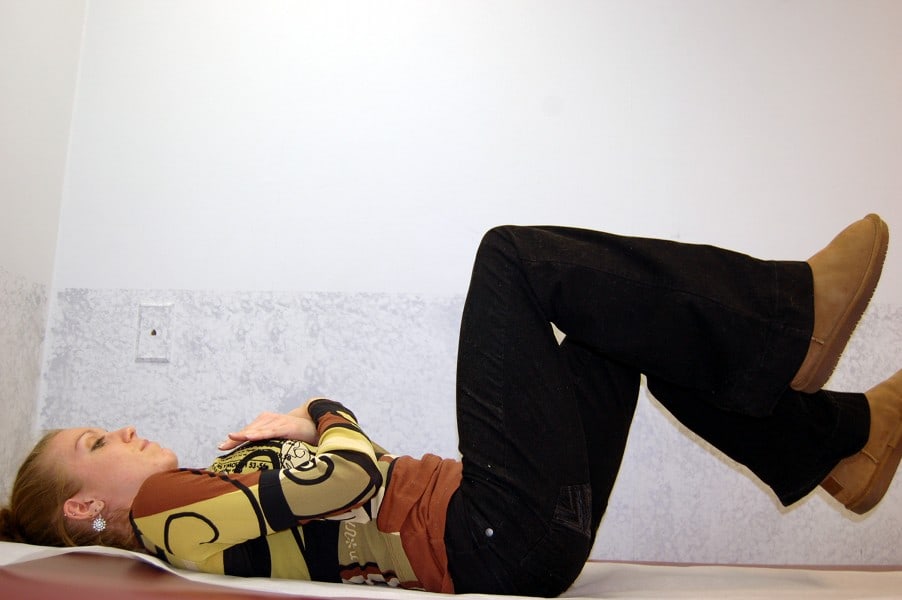
 As we discussed in last week’s article, hypermobility (joints that are too mobile/flexible)—as demonstrated by the ability to perform tasks such as bending forward and placing your palms flat on the floor without bending your knees—causes excessive joint mobility that can lead to joint injury, low back pain, and possibly arthritis pain. This week’s article will discuss ways that you can protect your joints by improving your core strength. If you are not a hypermobile individual, this program can also help increase core stability and prevent low back pain.
As we discussed in last week’s article, hypermobility (joints that are too mobile/flexible)—as demonstrated by the ability to perform tasks such as bending forward and placing your palms flat on the floor without bending your knees—causes excessive joint mobility that can lead to joint injury, low back pain, and possibly arthritis pain. This week’s article will discuss ways that you can protect your joints by improving your core strength. If you are not a hypermobile individual, this program can also help increase core stability and prevent low back pain.
The focus of core stabilization is the simultaneous activation of the back muscles and the abdominal muscles. Core stabilization exercises create a deep, internal, protective corset around the spine, which helps you maintain stability during all activities.
Improving your strength will help compensate for your joint instability. Your exercise program should challenge your muscles while minimizing impact on your joints.
Initially, you should focus on core stability, which will promote stability at your other joints. Pilates, Swiss ball ®, and Bosu ® exercises are activities that concentrate on your core muscles while simultaneously strengthening the muscles in your arms and legs.
Before you begin core stabilization exercises, it is important to identify the “neutral spine position” (NSP). This position is the most comfortable point between the extremes of an arched-back position and a flat-back position. Once you find your neutral spine position, maintain this during all core stabilization exercises and during your functional daily activities.
The exercises below will help you begin a core stabilization program. You should start with the beginner set and only advance after you can complete each activity while maintaining a neutral spine position: this is essential for those with hypermobility. For photos of all exercises, visit www.mackareyphysicaltherapy.com and search “hypermobility.”
Isometric Belly Tuck: While lying on your back with your knees bent and feet on floor, tighten your belly muscles by tucking your belly and flattening your back into the floor. Hold this isometric contraction for 5 seconds, relax and repeat 10 times.
Isometric Belly Tuck With Heel Slide: Position same as above. While holding the abs tight, slowly slide one heel up and down along the floor and then the other. Repeat 3-5 times with each leg. Rest for 3- 5 seconds and repeat this sequence 5-10 times.
Abdominal Curl: While lying on your back with your knees bent and feet on floor, hold the abs tight. Then, slowly curl your upper body as if you were to lift shoulder blades up and curl chest toward knees. Hold for 3-5 seconds and lower slowly. Repeat 5-10 times.
Isometric Belly Tuck With Bike Pedal: Position same as above. While holding the abs tight, slowly lift heel up like pedaling a bike while letting the heel tap the floor. Repeat 3-5 times with each leg. Rest for 3- 5 seconds and repeat this sequence 5-10 times.
Trunk Rows/Lats on Ball: Sit on exercise ball and face door. Attach exercise band to inside door knob and hold in both hands. Tighten abdominal muscles, pinch shoulder blades together and performing a “row the boat” movement. Return slowly. Focus on trunk core stabilization while performing this exercise by keeping trunk stable.
Muscle endurance is also important and should be addressed with low-impact activities such as cycling, low-impact aerobics, cross-country skiing, elliptical training, and deep-water running. Aquatic exercise reduces joint compression through buoyancy and is helpful when painful musculoskeletal injuries prevent participation in other forms of exercise. Remember, the contraction of the “abdominal core” should be maintained during all exercise and activities to protect those with hypermobile joints.
Proper posture, good body mechanics, and appropriate exercise protect and stabilize your joints. If you notice a progression of your hypermobility or pain despite these efforts, consult your physician who may recommend physical therapy for a more formal, structured program.
Photos: Jennifer Hnatko. Models: Samantha Snead.
Contributor: Janet Caputo, PT, OCS specializes in orthopedic and neurological rehabilitation as clinic director at Mackarey & Mackarey Physical Therapy Consultants, LLC. She is presently pursuing a doctor of physical therapy degree at theUniversity ofScranton.
If you missed last week's article, go back and read Part 1 on the Hazards of Hypermobility. Next week, read part 3 of 3 on exercises for shoulder instability.
Read “Health & Exercise Forum” – Every Monday. This article is not intended as a substitute for medical treatment. If you have questions related to your medical condition, please contact your family physician. For further inquires related to this topic email: drpmackarey@msn.com. Paul J. Mackarey PT, DHSc, OCS is a Doctor in Health Sciences specializing in orthopaedic and sports physical therapy. Dr. Mackarey is in private practice and is an affiliate faculty member at theUniversity ofScranton, PT Dept.